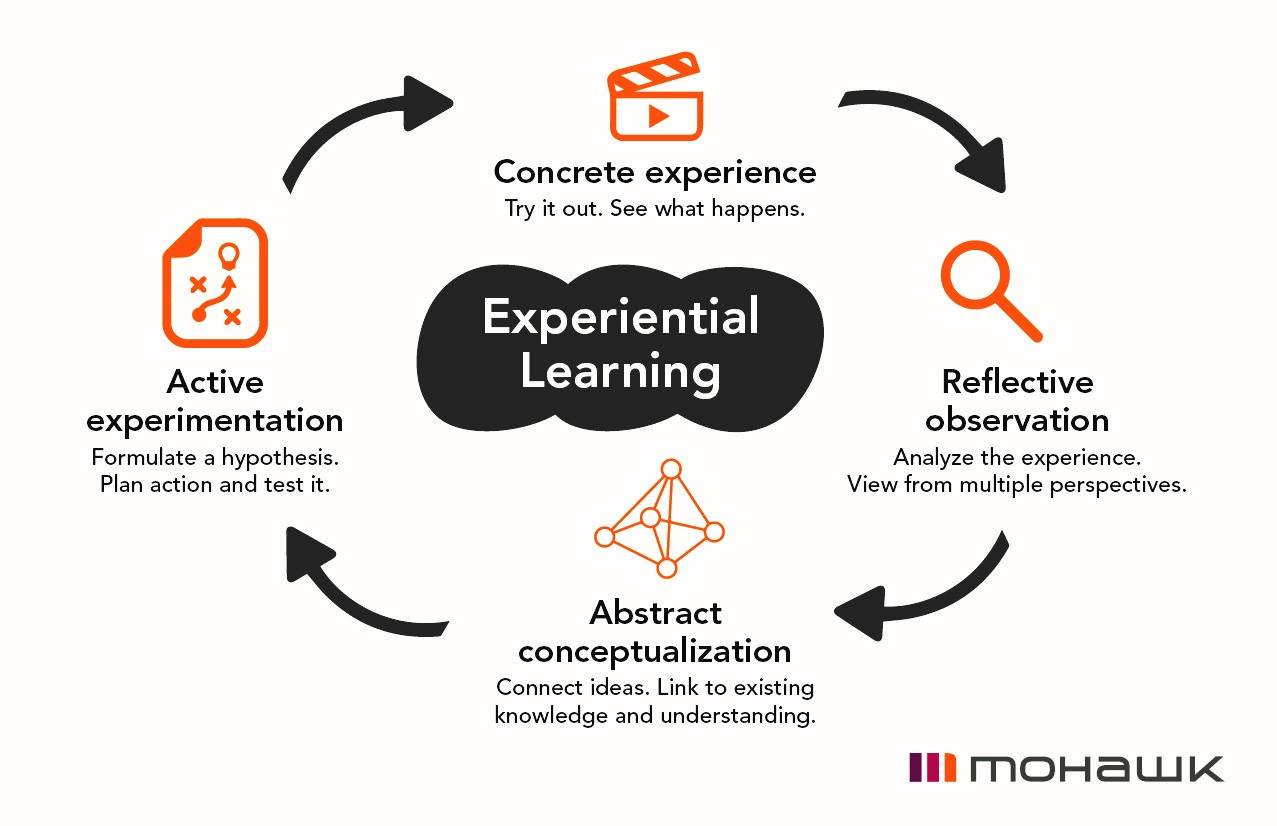Experience-based learning and memory-activating educating methods are correlated with the phenomena of immersion, thus we can talk about virtual reality as one of the most effective tools that can now be introduced to schools and universities.
In this article, we will show you why more and more institutions decide to use VR for educational purposes, focusing on its properties and qualities that answer the assumptions of David A. Kolb’s Experiential Learning Model.
Note: despite the virtual reality being in fact the source of real, valuable experiences that matter as a part of learning processes, it’s important not to analyze it using the popular “Dale’s Cone of Learning”. It is simply because the graph is often discussed as a not scientific visualization, which cannot serve as a reliable measure of experience-based learning.
New technologies and their educational value
When people think about innovative solutions for schools and universities, it’s usually about the tools that make education more interesting, engaging, and appealing. It’s no revelation that students tend to prefer learning through the new media, like videos, interactive software, or games, such as those available in virtual reality.
It’s important to note that the media market is constantly changing, especially when new types of technology emerge and become more accessible. This never-ending progress of the distribution of information leads teachers and authorities to better and better ways to deliver knowledge from across the different fields of education – from physics to environmental studies, from mathematics to history, from fine arts to geography.
VR in education and Kolb’s schooling theory
Learning is the process whereby knowledge is created through the transformation of experience
– David Kolb
The conclusion we came to is that the education sector is exceptionally capable of revealing the actual potential of developing types of technology. It’s probably because this particular area requires a complex set of technical qualities that together constitute a valuable teaching aid. Today, we know that virtual reality – and overall immersive media – have passed this test with flying colors.
Virtual reality is an extremely versatile medium, to say the least. It gives students an ability to participate even in theoretical lessons on a deeper level and to actively take part in different classes. It’s all about the experience, which is an ultimate carrier of knowledge, as David A. Kolb could have said. Kolb is an appreciated American researcher devoted to the so-called Experiential Learning Model, associated with practice-based human development. Below, you can see the simple infographic that illustrates Kolb’s theory.

source: mohawkcollege.ca
Following Kolb’s vision, we see the modern education system rather as a field for experiments and new methodological research, rather than for maintaining traditional schooling with its passive learning, and minimalistic, yet chaotic structure of classes. With virtual reality, students can be pushed to participate in chosen scenarios and make decisions that would eventually enable them to preserve their knowledge. It’s the first-person point of view that makes the VR experiences much more impactful.
Virtual reality can also bring cooperative quality to the learning cycle, bringing students together while facing posed problems.
Teachers can easily cast the VR users’ PoV on the screen to display their session. In the context of cooperative learning, it’s crucial for participants to be able to carry on reflective dialogue inside the group, make notes collectively, and state conclusions. It also appears to be connected to Kolb’s reflective observation and conceptualization.
Constructive experiments in VR
The key ingredient of the Experiential Learning Model is, of course, the experimental part, which is in fact the test of effective knowledge acquirement. Using virtual reality applications during the classes, teachers can not only set straight subject-related challenges, but also enhance individual knowledge development by conducting VR exams that can serve as a playground for students to solve problems using trial and error methods.
As you can see, VR applications can make an excellent addition to a wide range of classes, creating new possibilities related to the Experiential Learning theory.
Using immersive media, schools can program the experiences as they like, to reach out to their students who seek engaging and attractive courses..

